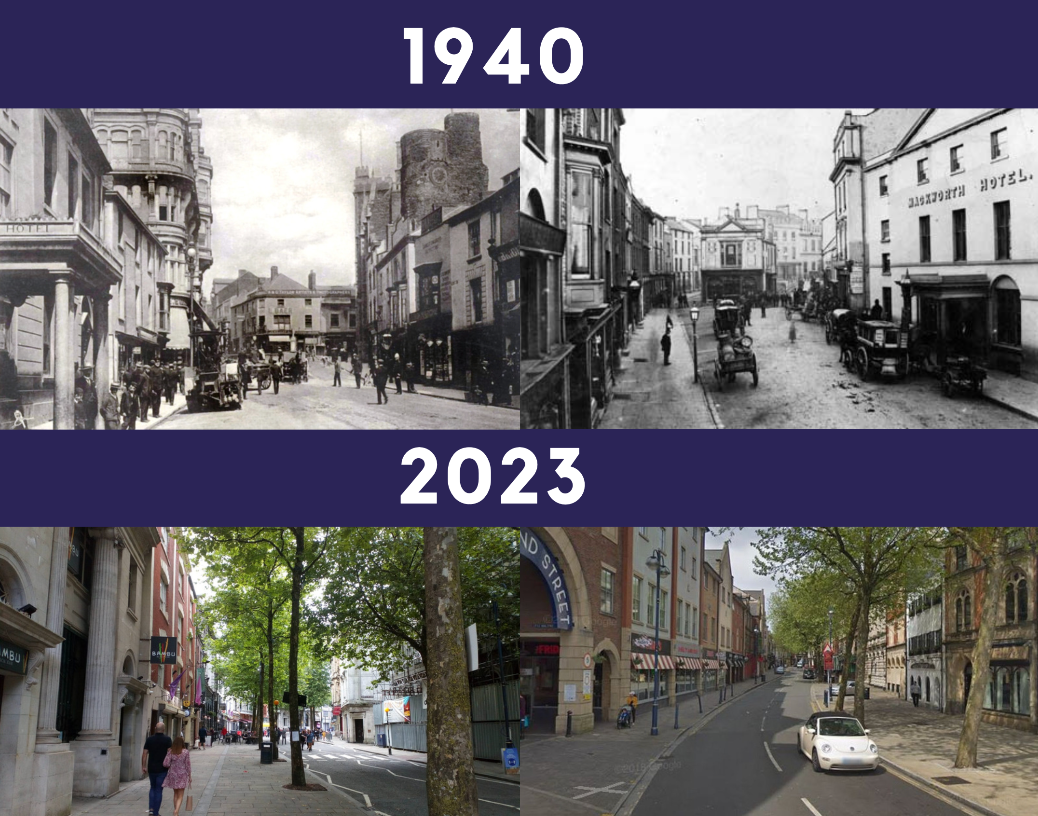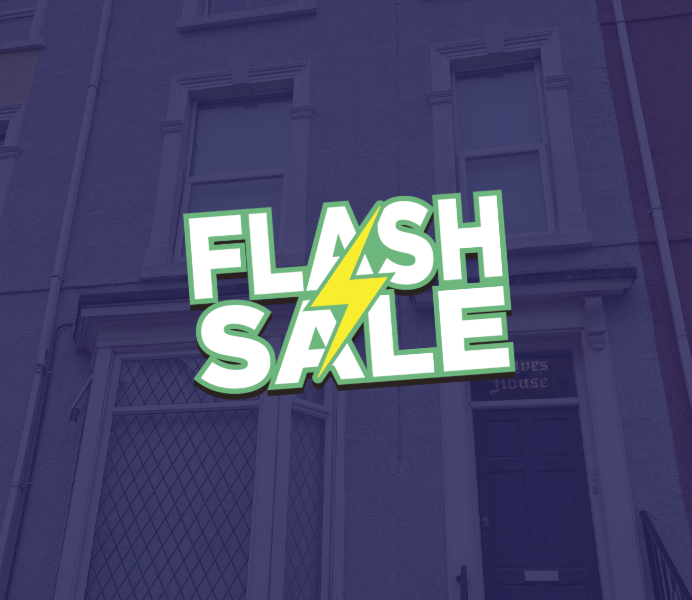01792 514 516
Wind Street 1940-2023
Ever wondered about the history of Wind Street?

To walk down Swansea’s Wind Street is to follow a route people have trod for the best part of 1,000 years. These days it may have a reputation for its lively nightlife and a kebab on the way home, but over the centuries the street has had many lives, and has changed as Swansea has changed. When you are on Wind Street, you are in the heart of what Swansea was. The origins of the town are undocumented, though one popular theory holds that it was established as a trading post by the Vikings.
By 1100 a Norman castle had been built at the northern end of Wind Street, roughly where the Castle Buildings - with its mix of cafes, shops and flats - is today, and coins soon started appearing on coins, suggesting their was a mint in the settlement.
By the 1500s Wind Street was also home to a busy weekly market which took place in the area near the castle - it’s likely people would have come from all over Gower and beyond to buy and sell goods, and to meet. Ale houses would have followed.
Into the 18th Century the population of Swansea was likely to be no more than 2,000 souls, but as the settlement became more wealthy so did Wind Street.
The commercial development of Wind Street continued into the 19th Century, and by 1854 five of Swansea’s 12 clock and nautical timepiece-making businesses were located on the street, along with banks, accountants and other services needed to support a busy port town. Businesses such as chemists were also trading on the street - in 1888 records show a pharmacist, J Atkins, selling a “blood purifier” which was claimed to banish the pollutants responsible for cancer, gout, distemper, scrofula and many other ailments. At 2s 6d per bottle, it sounds like quite a bargain. As Swansea grew wealthy on its metal-working industries, banks continued to open there, being joined by hotels - including Metropole and the original Mackworth - and exclusive clubs, and later the town’s head Post Office, which still stands today as the Idols bar.
Into the 1920s and Wind Street was continuing to boom, and by the end of the decade Ben Evans boasted 38 departments providing everything from ladies’ fashions, home furnishings and sporting goods, to a restaurant, and even a funeral services.
Well into the 1990s banks were still a prominent feature of life on the street, but as they closed a new kind of business moved in. It was hoped the street might become a “cafe quarter” for the city, but in the end bars and clubs came to dominate. There is currently talk of pedestrianising the street on a permanent basis to make it more people-friendly.
Wind Street is now part of the “night-time economy” of the city offering everything from kebabs to cocktails, pizzas to pints. And it still attracts people from far and wide, as it has done for hundreds of years.




